Categories
Tags
Machine Learning in Quantum Sciences
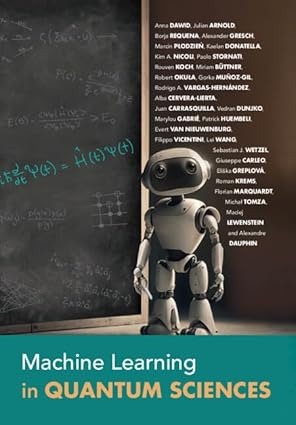
Artificial intelligence is dramatically reshaping scientific research and is coming to play an essential role in scientific and technological development by enhancing and accelerating discovery across multiple fields. This book dives into the interplay between artificial intelligence and the quantum sciences; the outcome of a collaborative effort from world-leading experts. After presenting the key concepts and foundations of machine learning, a subfield of artificial intelligence, its applications in quantum chemistry and physics are presented in an accessible way, enabling readers to engage with emerging literature on machine learning in science. By examining its state-of-the-art applications, readers will discover how machine learning is being applied within their own field and appreciate its broader impact on science and technology. This book is accessible to undergraduates and more advanced readers from physics, chemistry, engineering, and computer science. Online resources include Jupyter notebooks to expand and develop upon key topics introduced in the book.
- minimomy
- Today, 09:27
- 0
Handbook of Data Structures and Applications (Chapman & Hall/CRC Computer and Information Science Series)

Although there are many advanced and specialized texts and handbooks on algorithms, until now there was no book that focused exclusively on the wide variety of data structures that have been reported in the literature. The Handbook of Data Structures and Applications responds to the needs of students, professionals, and researchers who need a mainstream reference on data structures by providing a comprehensive survey of data structures of various types.
- minimomy
- Today, 09:22
- 0
The Art of Inpainting: Mathematical Methods for the Virtual Restoration of Illuminated Manuscripts
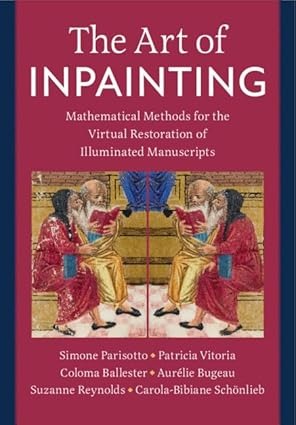
The art of image restoration and completion has entered a new phase thanks to digital technology. Indeed, virtual restoration is sometimes the only feasible option available to us, and it has, under the name 'inpainting', grown, from methods developed in the mathematics and computer vision communities, to the creation of tools used routinely by conservators and historians working in the worlds of fine art and cinema. The aim of this book is to provide, for a broad audience, a thorough description of imaging inpainting techniques. The book has a two-layer structure. In one layer, there is a general and more conceptual description of inpainting; in the other, there are boxed descriptions of the essentials of the mathematical and computational details. The idea is that readers can easily skip those boxes without disrupting the narrative. Examples of how the tools can be used are drawn from the Fitzwilliam Museum, Cambridge collections.
- minimomy
- Today, 09:20
- 0
Essential Yoga Therapy: A beginner's guide to applying yoga therapy
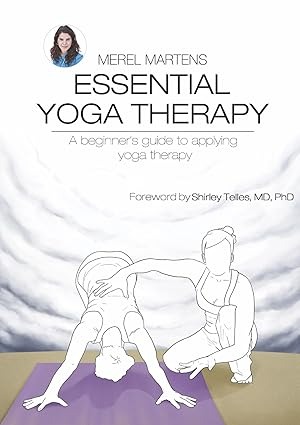
Merel's journey from medical student, to an international healthcare policy professional, to a yoga therapist has taken her all over the world working with various kinds of patient, yoga students, meditators and musicians. Along the way she has developed an in-depth knowledge of how the understanding of human physiology and the practice of yoga, meditation, relaxation, and interpersonal coaching can be combined to create life transforming yoga therapy.
- minimomy
- Today, 07:28
- 0
Embedded System Design,
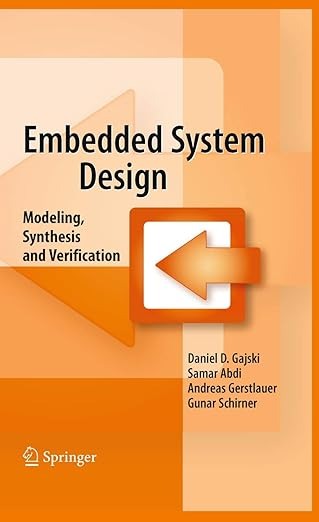
Embedded System Design: Modeling, Synthesis and Verification introduces a model-based approach to system level design. It presents modeling techniques for both computation and communication at different levels of abstraction, such as specification, transaction level and cycle-accurate level. It discusses synthesis methods for system level architectures, embedded software and hardware components. Using these methods, designers can develop applications with high level models, which are automatically translatable to low level implementations. This book, furthermore, describes simulation-based and formal verification methods that are essential for achieving design confidence. The book concludes with an overview of existing tools along with a design case study outlining the practice of embedded system design. Specifically, this book addresses the following topics in detail:
- minimomy
- Today, 07:26
- 0
How to Build a Digital Library (Morgan Kaufmann Series in Multimedia Information and Systems (Paperback)), 2nd Edition
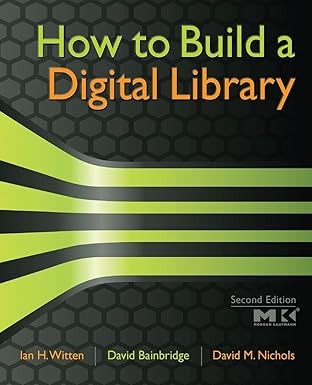
The Second Edition reflects developments in the field as well as in the Greenstone Digital Library open source software. In Part I, the authors have added an entire new chapter on user groups, user support, collaborative browsing, user contributions, and so on. There is also new material on content-based queries, map-based queries, cross-media queries. There is an increased emphasis placed on multimedia by adding a "digitizing" section to each major media type. A new chapter has also been added on "internationalization," which will address Unicode standards, multi-language interfaces and collections, and issues with non-European languages (Chinese, Hindi, etc.).
- minimomy
- Today, 07:21
- 0
The Practical Handbook of Inverter Mini Split Operation and Service Procedures: A Complete Guide to Installation, Diagnostics, Repairs, and Maintenance for HVAC Professionals
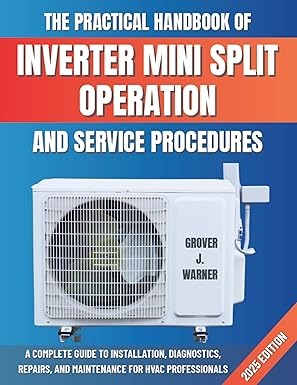
- Structured procedures for system installation
Includes step-by-step guidance on unit positioning, electrical wiring, refrigerant line setup, and safe startup procedures. - Clear diagnostics for common and advanced faults
Learn how to recognize system symptoms, use diagnostic tools effectively, and follow structured troubleshooting logic for electrical, refrigerant, and control-related issues. - Comprehensive safety protocols and best practices
Covers lockout/tagout, PPE requirements, leak testing, pressure verification, and electrical safety in detail. - Full operational walkthroughs for configuration and optimization
Understand how to correctly set modes, temperatures, and remote control functions, and how to avoid common setup mistakes. - Maintenance procedures for long-term system reliability
Includes seasonal checklists, filter care, coil cleaning, electrical inspection, and refrigerant pressure checks. - Reference charts, diagrams, and industry standards in one place
Access pressure-temperature charts, wiring diagrams, superheat/subcooling values, and compliance references (EPA, ASHRAE, ISO, NEC).
- minimomy
- Today, 07:17
- 0
Topology Optimization via L-Systems and Genetic Algorithms: Bioinspired Encoding for Generative Design
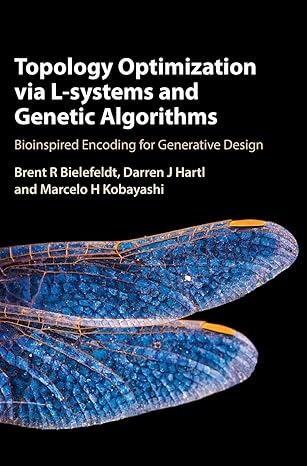
Providing a succinct overview of Lindenmayer system (L-system) topology optimization, this book focuses on the methods and theory underlying this novel bioinspired approach. Starting from basic principles, the book outlines how topology optimization can be utilized at the conceptual design stage and shows how it offers straightforward applicability to multi-objective and/or multi-physical industrial problems. Design strategies are clearly demonstrated using a host of case studies and real-world examples, and their potential challenges and solutions are discussed. Written from an optimization and design perspective, the authors both summarize the latest advances in this field and suggest potential avenues of research and development for future work. This will be the ideal resource for engineering practitioners, researchers, and students wanting to gain a new perspective on using topology optimization to improve product design.
- minimomy
- Today, 04:33
- 0
Microsoft Word and Excel Simplified: The Ultimate Beginner’s Guide : Master Essential Functions to Write, Organize, Boost Productivity, Data Management, and Analyze with Confidence and Ease
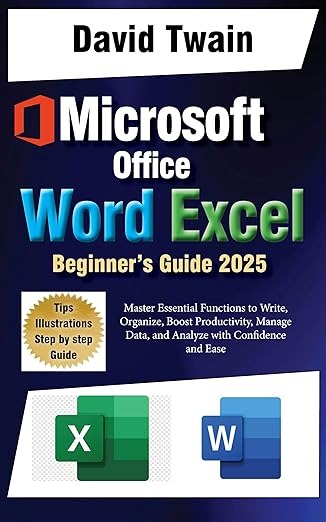
Master Essential Functions to Write, Organize, Boost Productivity, Manage Data, and Analyze with Confidence and Ease!
🚀 Struggling with Microsoft Word or Excel? Want to create professional documents and powerful spreadsheets with ease? This step-by-step guide is designed for absolute beginners and anyone looking to sharpen their skills!
📂 What’s Inside:
✅ Master Microsoft Word: Effortlessly write, format, and structure your documents for professional results.
✅ Excel Made Simple: Organize data, use formulas, and analyze information like a pro.
✅ Time-Saving Shortcuts: Boost efficiency with quick commands and hidden tricks.
✅ Step-by-Step Tutorials: Clear, beginner-friendly explanations and practical examples.
✅ Real-World Practice Projects: Create resumes, reports, budgets, and invoices with ease.
✅ Collaboration & Cloud Sync: Learn how to share, protect, and manage files online via OneDrive.
- minimomy
- Today, 03:55
- 0
How to Think About Algorithms
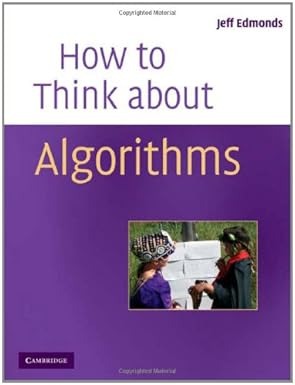
There are many algorithm texts that provide lots of well-polished code and proofs of correctness. This book is not one of them. Instead, this book presents insights, notations, and analogies to help the novice describe and think about algorithms like an expert. By looking at both the big picture and easy step-by-step methods for developing algorithms, the author helps students avoid the common pitfalls. He stresses paradigms such as loop invariants and recursion to unify a huge range of algorithms into a few meta-algorithms. Part of the goal is to teach the students to think abstractly. Without getting bogged with formal proofs, the book fosters a deeper understanding of how and why each algorithm works. These insights are presented in a slow and clear manner accessible to second- or third-year students of computer science, preparing them to find their own innovative ways to solve problems.
- minimomy
- Today, 03:51
- 0